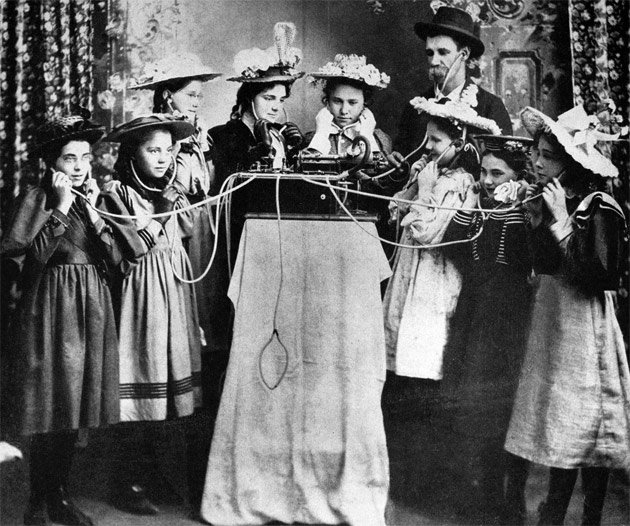Introduction
On November 23, 1889, a historic event took place at the Palais Royale Saloon in San Francisco. It was the first presentation of a revolutionary invention that would change the way people accessed and enjoyed music forever – the jukebox. Developed by Louis Glass and William S. Arnold, this early version, known as the nickel-in-the-slot phonograph, allowed patrons to listen to music in public places for the first time, marking a significant cultural shift in the music industry.
The Inventors – Louis Glass and William S. Arnold
Louis Glass, a German-born entrepreneur and inventor, was the mastermind behind the first jukebox. He had a keen interest in music and technology and saw the potential to create a device that could bring music to the masses. Glass teamed up with William S. Arnold, a skilled mechanic, to bring his vision to life.
Glass and Arnold worked tirelessly to develop a machine that could play recorded music. They experimented with various designs and mechanisms until they finally came up with the nickel-in-the-slot phonograph. This early jukebox used a coin-operated system, allowing users to select and play a song of their choice.
The First Presentation
The Palais Royale Saloon in San Francisco was the chosen venue for the first public presentation of the jukebox. On November 23, 1889, patrons of the saloon gathered in anticipation to witness this groundbreaking invention. As the first notes of recorded music filled the air, the crowd was captivated by the novelty and convenience of the jukebox.
The nickel-in-the-slot phonograph was an instant hit. People flocked to the Palais Royale Saloon to experience this new form of entertainment. The jukebox allowed them to listen to their favorite songs without the need for live performers or expensive musical instruments. It was a game-changer.
The Impact on Music Access and Enjoyment
The introduction of the jukebox in 1889 revolutionized the way people accessed and enjoyed music. Prior to this invention, music was primarily experienced through live performances or personal musical instruments. The jukebox brought recorded music into public spaces, making it accessible to a wider audience.
With the jukebox, people could now listen to their favorite songs anytime, anywhere. It provided a sense of freedom and convenience, allowing individuals to choose the music that resonated with them. This newfound accessibility to music paved the way for the modern music industry, shaping the way we consume and appreciate music today.
Legacy and Evolution
The success of the nickel-in-the-slot phonograph sparked a wave of innovation in the jukebox industry. Over the years, jukeboxes evolved, incorporating new technologies and features. The coin-operated system gave way to digital jukeboxes, allowing users to select songs using touchscreens or mobile apps.
Despite the advancements in technology, the jukebox continues to hold a special place in our cultural history. It represents a time when music became more accessible and communal. Jukeboxes can still be found in select establishments, serving as a nostalgic reminder of the past and a source of enjoyment for music enthusiasts.
Conclusion
The first presentation of the jukebox in 1889 at the Palais Royale Saloon marked a significant milestone in the history of music. Louis Glass and William S. Arnold’s invention revolutionized the way people accessed and enjoyed music, paving the way for the modern music industry. The jukebox provided a new level of convenience and accessibility, allowing individuals to choose and listen to their favorite songs in public spaces. Its impact can still be felt today, making it a truly iconic invention in the realm of music.
SEO Excerpt:
Discover the historical significance of the first presentation of the jukebox in 1889. Learn about the inventors, Louis Glass and William S. Arnold, and how their invention changed the way people accessed and enjoyed music. Explore the impact of the jukebox on the music industry and its evolution over time.

